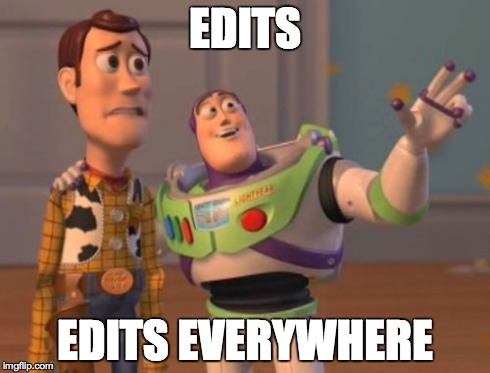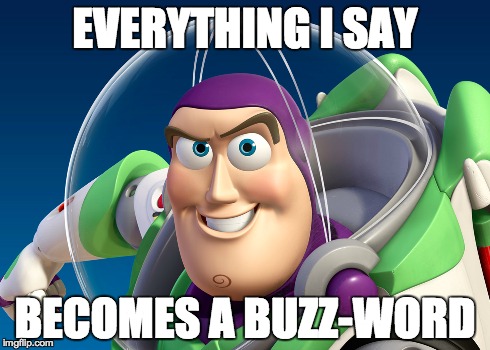What Pixar’s 22 Storytelling Rules Teach Us About Content Marketing
If anyone knows how to create high-quality content, it’s Pixar. (Their 14 feature films have been nominated for 211 awards — although they only won 210.) A few years ago, storyboard artist Emma Coats tweeted 22 nuggets of storytelling wisdom she picked up in her years at Pixar’s studios. They’ve been retweeted, compiled into SlideShares, and blogged since then, but here they are – for the first time – with some practical SEO-driven content marketing applications.
1 – You admire a character for trying more than for their successes.
Why? Because it makes them relatable, and authenticity speaks louder than accolades. This is why it is important to develop your brand voice, and continue to hone it through every piece of content you create. Share and celebrate your successes, of course, but don’t sweep your mistakes under the proverbial rug. Rather, tell us what went wrong, what you learned, and what you’re changing. (I’m looking at you, Nationwide. Please tell us what you learned from your 2015 Super Bowl spot …)
2 – Keep in mind what’s interesting to an audience, not what’s fun to do as a writer. They can be very different.
It’s natural to write for yourself — talk about yourself, drag out long illustrations, invent catchy references and phrases that only your college roommate will really get… Instead, get right to what readers want: data, visuals, applications, next steps, etc. Focus on answering their questions and easing their pain. 
3 – Trying for theme is important, but you won’t see what the story is actually about until you’re at the end of it. Now rewrite.
A content piece is never done the first time. Or the second time. Or maybe even the third time. Delete ruthlessly and proofread vigilantly.
4 – Once upon a time there was _. Every day, _. One day _. Because of that, _. Because of that, _. Until finally _.
In a buyer-driven market place, content that connects makes the buyer the hero of the story rather than the brand’s product. Use your content to tell his story. Empathize with his conflict, and demonstrate how your brand can come alongside him to win the day.
5 – Simplify. Focus. Combine characters. Hop over detours. You’ll feel like you’re losing valuable stuff but it sets you free.
#Truth – even in B2B content! Write and rewrite. Then reorder, restructure, copy-and-paste irrelevant sections to new documents. Delete the junk. Then you’ll find that gem — that one idea or insight that steals the show. 
6 – What is your character good at, comfortable with? Throw the polar opposite at them. Challenge them. How do they deal?
The heart of this strategy is about overcoming conflict and the transformation that happens to the character, which is where your hero (your buyer) already is when they find your content. They’re not searching the web for answers they already have. They’ve clicked on your content because they’re being challenged, and they’re trying to deal. Create content that helps them overcome and transform.
7 – Come up with your ending before you figure out your middle. Seriously. Endings are hard, get yours working up front.
Write your title first (at least a draft) to help keep your content focused, and then skip to the end and write down the solution or answer you are delivering. The rest is a map — from the headline that got the buyer’s attention because it speaks directly to his need, to the conclusion that draws a bold X over where he needs to go.
8 – Finish your story, let go even if it’s not perfect. In an ideal world you have both, but move on. Do better next time.
It’s been said that good is the enemy of great, but perfect may be just as deadly an enemy. This is not a green light to create mediocre content, but at some point your ebook – or white paper or infographic – has to be finished. You won’t knock every blog post out of the park, but a blog with a killer post every three months won’t build an audience either. 
9 – When you’re stuck, make a list of what WOULDN’T happen next. Lots of times the material to get you unstuck will show up.
Helping your audience avoid further complications and problems is as valuable as helping them solve their current one. If there are gaps in your blog schedule that you’re not sure how to fill, consider what buyers should not do? What’s a really bad idea? What fails have you seen?
10 – Pull apart the stories you like. What you like in them is a part of you; you’ve got to recognize it before you can use it.
What blog post or ebook has proven to be incredibly helpful for you? Trying analyzing it through a new lens, separate from the topic or theme. What about the content was helpful? What made it easy to read? What made you want to share it?
11 – Putting it on paper lets you start fixing it. If it stays in your head, a perfect idea, you’ll never share it with anyone.
Make sure there are deadlines on your content strategy. When will those blog posts be ready? When will you release the ebook? Work with someone who isn’t afraid to bug you about sticking to your schedule to make sure your ideas get shared.
12 – Discount the 1st thing that comes to mind. And the 2nd, 3rd, 4th, 5th – get the obvious out of the way. Surprise yourself.
Creating high-quality content means creating something with unique value. Whether you’re getting content inspiration from keyword research or social media spying, don’t just reword the first good idea that you find. Dig deeper and speak to a unique niche and/or offer unique insight.
13 – Give your characters opinions. Passive/malleable might seem likable to you as you write, but it’s poison to the audience.
Have an opinion! Disagree vehemently, question fearlessly, and support wholeheartedly. A little bit of controversy can be a good thing. Better to get attention – some good and some bad – because of a well-expressed opinion, than get no attention at all because of a collection of lukewarm content.
14 – Why must you tell THIS story? What’s the belief burning within you that your story feeds off of? That’s the heart of it.
What will your readers miss if they don’t read what you have to write? What mistakes might they make? What opportunities will they miss? Let that be your driving force.
15 – If you were your character, in this situation, how would you feel? Honesty lends credibility to unbelievable situations.
This is how you develop empathetic, effective personas. Put yourself in the customer’s shoes. What is the problem? What is at stake? Who is breathing down his neck? What are her options? Content created for those personas will naturally feel familiar and credible.
16 – What are the stakes? Give us reason to root for the character. What happens if they don’t succeed? Stack the odds against.
You don’t get to invent the stakes or the odds, but they’re already stacked. Draft compelling CTAs by reminding the hero/customer what happens if he doesn’t succeed.
17 – No work is ever wasted. If it’s not working, let go and move on – it’ll come back around to be useful later.
You started to develop a theme or a series, and it’s just not working. Maybe you’re halfway through a blog or podcast series and your metrics are falling. You are allowed to jump ship. Keep that material in a folder for later, though. Maybe it just needs reworking. Maybe your audience will be ready for it in another year.
18 – You have to know yourself: the difference between doing your best and fussing. Story is testing, not refining.
Don’t get so caught up in creating engaging content that you lose sight of what you’re actually trying to say to your unique audience. Keep a few notes on brand voice, personas, and strategy at hand so you don’t wander too far from your original intent. 
19 – Coincidences to get characters into trouble are great; coincidences to get them out of it are cheating.
You have to offer real solutions. Whether it’s your product, or the wisdom you’re offering for free in your content, your audience doesn’t need baseless hope or inspiring platitudes. Testimonials and case studies are great content pieces, but only if they display proven, tested solutions – not lucky breaks.
20 – Exercise: take the building blocks of a movie you dislike. How’d you rearrange them into what you DO like?
Ever read a blog post that did pretty good, but missed the mark? What needs to change to take it from good to great? Do it.
21 – You gotta identify with your situation/characters, can’t just write ‘cool.’ What would make YOU act that way?
Authenticity, honesty, personas. Buzzwords become buzzwords for a reason. 
22 – What’s the essence of your story? Most economical telling of it? If you know that, you can build out from there.
What’s the elevator pitch for your content strategy? Who are you? Who are you creating content for? And why? Build out your content from that simple strategy.
To Infinity and Beyond!
Per your content strategy, Pixar’s rules are not necessarily in order. If you don’t have a strategy, or if it needs an overhaul, start at the end and outline the framework. If you’re out of ideas for content, try simplifying (#5) or telling your audience what not to do (#9). If your content just isn’t connecting, make sure you’re offering real solutions (#19), and try writing the ending before the middle (#7). And when all else fails, just keep swimming …
Pixar’s 22 Rules of Storytelling and how they apply to your content marketing – http://t.co/8dhazmBPgS pic.twitter.com/TPFCjHV1wQ — Nate Dame (@seonate) February 5, 2015
What's Next?
Profound Strategy is on a mission to help growth-minded marketers turn SEO back into a source of predictable, reliable, scalable business results.
Start winning in organic search and turn SEO into your most efficient marketing channel. Subscribe to updates and join the 6,000+ marketing executives and founders that are changing the way they do SEO:
And dig deeper with some of our best content, such as The CMO’s Guide to Modern SEO, Technical SEO: A Decision Maker’s Guide, and A Modern Framework for SEO Work that Matters.




